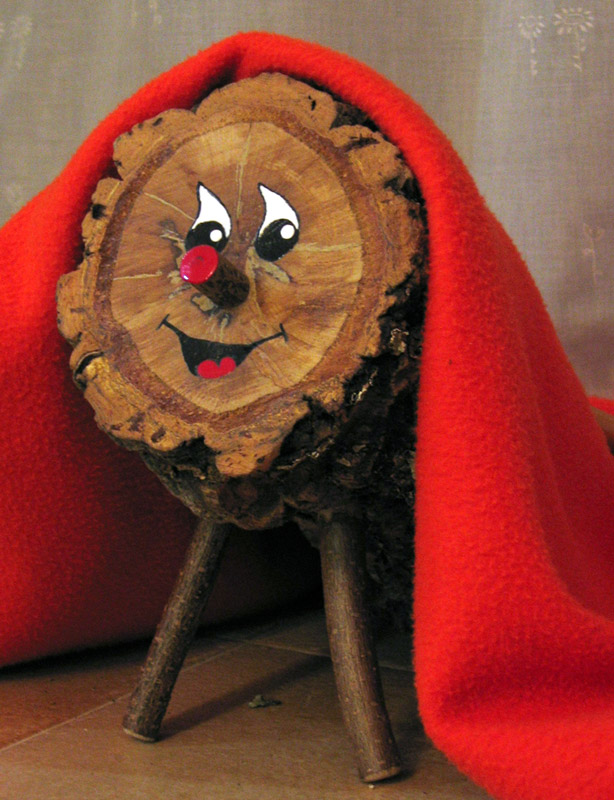Christmas Goes Into Overtime

Have you ever heard of a log shitting candy? Well, here in Catalonia we have El Tio, a blanket-covered log with a face at one end decorated to resemble a cheery person. On the nights leading up to Christmas, the children “feed” the Tio by leaving bits of food and water in front of him. The Tio grows each night, until Christmas Eve, when the children beat him with a stick, whereupon he “shits” candy and other sweets for the children to eat. In addition, there may be small gifts. In more traditional homes the Tio is then placed in the fireplace to burn.
A song is sung during the beating of the Tio. A translation of one of the songs is: “Shit, log, shit nougats, hazelnuts and mató cheese. If you don’t shit well I’ll hit you with a stick, shit, log!” If this song seems crude to you, remember that a figure called a Caganer (Shitter) appears in all the Nativity scenes. Sometimes the Tio also pees white wine and shits salted herrings. Things are a bit scatalogical here in Catalonia.
In recent years, Santa Claus has begun to make an appearance and the gifts are larger, but that is a marketing ploy brought on by rampant capitalism from the US and isn’t a part of the original Christmas tradition here in Spain.
You might think that Christmas was over after December 25th, but that is just the beginning. The decorations remain up and the streets are still filled with holiday shoppers. Here in Girona the street musicians continue to play Christmas carols after the 25th. “Jingle Bells” rings through the streets at all hours. “What’s going on?” I thought the first year we were here. “Don’t these people ever look at a calendar?”
Perhaps you have heard of the “Twelve Days of Christmas.” That is the period of twelve days following Christmas and ending with Epiphany on January 6. January 6 is the “Día de los Reyes” in Spain. It is the day when the three kings (the three Magi) put in an appearance and give their gifts to all children, not just to the Christ child.
In Girona, the Magi move in a few days early and set up camp on a hillside above the town. On the evening of January 5th there is a huge parade (la Cabalgata) through the streets, with bands, fire eaters, horses, and wagons loaded with gift boxes. It includes the three kings and their entourage, throwing candy into the hands of watching children. All in all, it is another one of those fiery and smoky parades that the locals love so much.
And what is in it for the children? Well, they have written their requests for gifts to one of the three kings, and, sure enough, the big haul of presents appears on the morning of January 6.
Finally, Christmas and lengthy Three Kings’ season is over until next year. Exhausted parents go back to work. Children return to school, and the doldrums of winter sets in for us all. Now we just have to wait for the light to return—and it already has begun.







